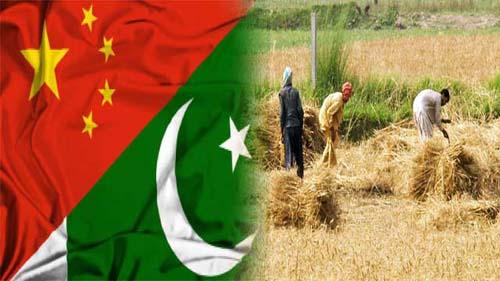
Pak-Sino coop in agriculture, food security highlighted
China Economic Net
Sanya: Factors of production in agriculture of Pakistan and China can be complementary to each other, noted Rabbia Nasir, Third Secretary of the Embassy of Pakistan to China while attending the 2022 China Seed Congress and the Nanfan Agricultural Silicon Valley Forum recently.
“Both countries need to strengthen cooperation in agriculture and food security to achieve a win-win solution,” Rabbia Nasir added.
As good neighbors and all-weather strategic cooperative partners, Pakistan and China have been working together to ensure food security with food as one of the major sources of trade between the two countries.
According to Chinese customs statistics, Pakistan exported $610 million of agricultural products to China in the first half of 2022, up 30.85 percent year on year. Among them, rice exports to China amounted to $345 million. Chinese investors are also investing more and more in Pakistan’s agricultural sector. Both countries are conducting agricultural cooperation under the Belt and Road Initiative and the Global Development Initiative.
To further enhance agricultural cooperation and food security, “we should make the most of the complementary factors of production in agriculture of both countries,” Rabbia Nasir said.
For example, she added, Pakistan can contribute a friendly policy of affordable production factors, abundant agricultural products and investment in food processing. And China can share experience with Pakistan in training, agricultural modernization, cold chain technology, logistics, seed technology, agricultural demonstration areas, etc.
As per data from World Economic Forum, the global food security challenge is straightforward: by 2050, the world must feed 9 billion people. The demand for food will be much greater than it is today. The United Nations has set “ending hunger, achieving food security and improved nutrition, and promoting sustainable agriculture” as the second of its 17 Sustainable Development Goals (SDGs) for the year 2030.
To achieve these objectives, as Rabbia Nasir put it, requires addressing a host of issues, from gender parity and ageing demographics to skills development and global warming. “Agriculture sectors have to become more productive by adopting efficient business models and forging public-private partnerships. And they need to become sustainable by addressing greenhouse gas emissions, water use and waste,” she explained. Moreover, countries must work together through bilateral and multilateral cooperation.
The 2022 China Seed Congress and the Nanfan Agricultural Silicon Valley Forum held in Sanya, Hainan, China has brought together more than 2,000 scientists, experts and field workers from different countries to discuss challenges and breakthrough solutions for high quality and green development of the seed industry.
